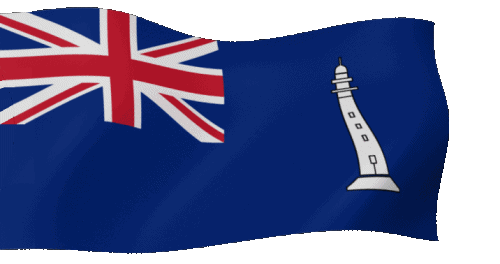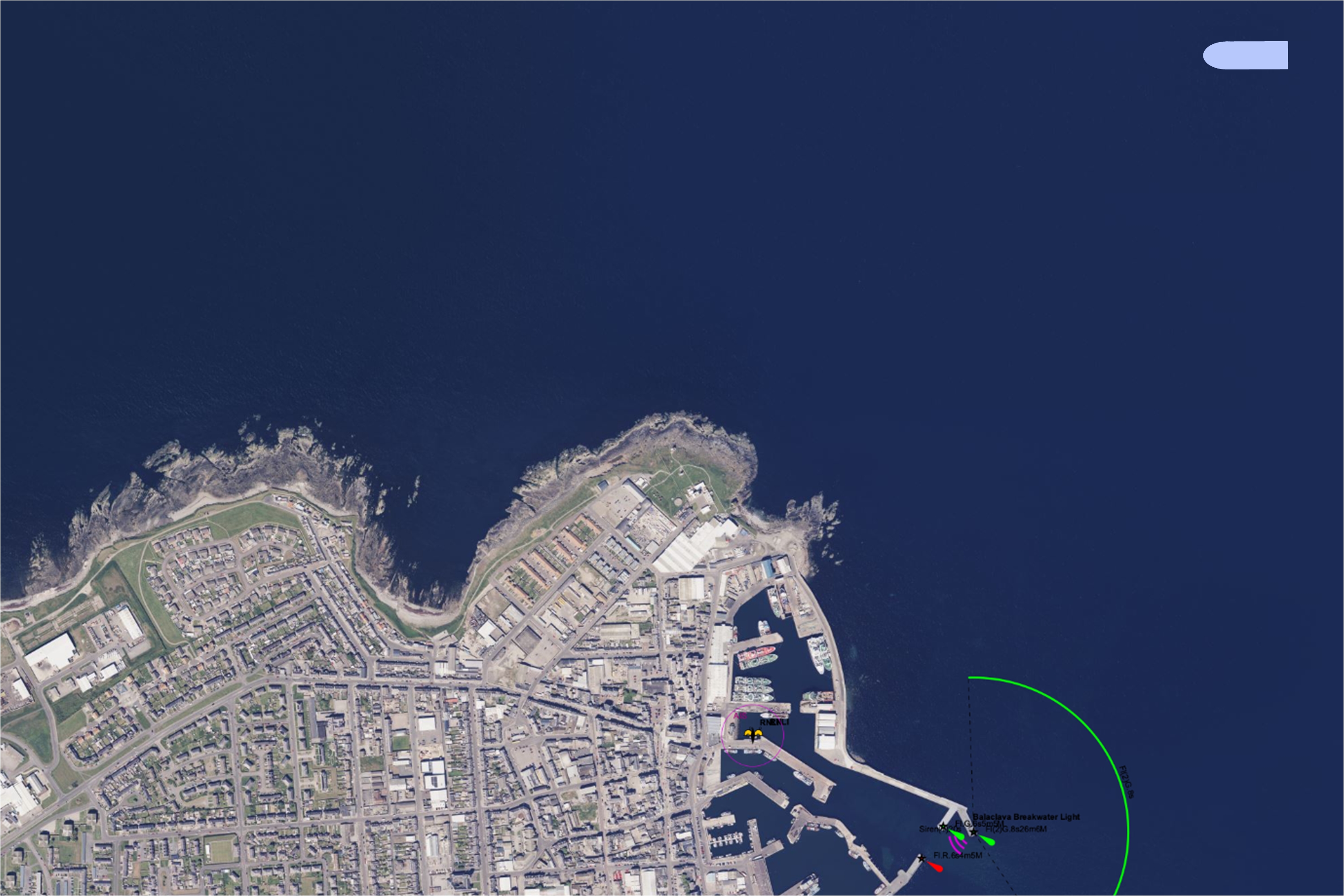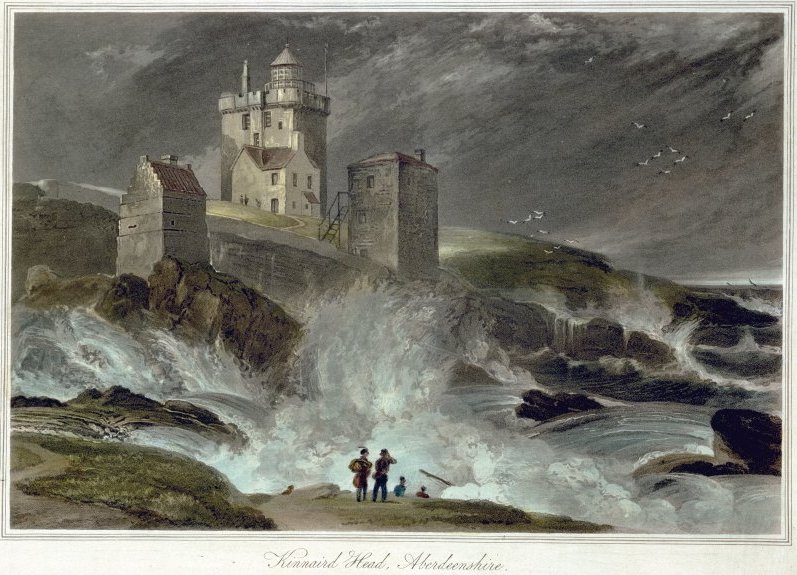
Place of the lighthouse
Kinnaird Head (Scottish Gaelic: An Ceann Àrd, "high headland") is a headland projecting into the North Sea in Aberdeenshire on the east coast of Scotland. Kinnaird Head must have been an important landmark in the past for seafarers who had no sea charts and compasses or other nautical instruments to guide them on their travels.
The construction of Kinnaird Castle, also known as Fraserburgh Castle or Kinnairdshead Castle, began in March 1570. The builder was Sir Alexander Fraser, 8th laird of Philorth, (c.1536–1623), who also transformed the fishing village of Faithlie into the burgh of Fraserburgh in the 1590s. Building the castle was very expensive, Sir Alexander was forced to sell the family home Cairnbulg Castle (formerly Philroth Castle) near Philforth river.
The last people who resided in the castle were Henrietta Fraser (1698-1751), daughter of the 12th Lord Saltoun, and her husband John Gordon of Kinellar (1684-1764). In 1787 the castle was sold to the Trustees of the Northern Lights; (precursor of the Northern Lighthouse Board), who turned it into Kinnaird Head Lighthouse.The Lighthouse
In 1786, the Parliamentary Act for erecting certain lighthouses in the "Northern Parts of Great Britain" was passed, and the Commissioners for Northern Lighthouses were established. They were authorized to build four lighthouses in Scotland, of which Kinnaird Head was the first.
Orginally Kinnaird Head Lighthouse was designed by the Edinburgh Lamp Manufacturer, Thomas Smith (1752-1815). He was the first, part-time unpaid engineer for the Northern Lighthouse Board.
The design was later improved by three of the Stevenson lighthouse engineers, namely Robert Stevenson, Alan Stevenson and David Alan Stevenson. The structure was rebuilt in the 1820s, and superseded by a new lighthouse in 1991.
The whitewashed building has a floor area of 12.2 by 9.1 meters and has a corbelled parapet. It originally had five vaulted masonry floors and walls of 1.83 meter thick. The lighthouse has its own foundation and is separate from the castle. The granite tower has an outer diameter of 4.9 meters and has walls of 76 cm thick. The lantern is about 17.7 m above the ground and 36.6 m above the high water level.
Originally, the tower house provided storage accommodation and facilities for the keepers. Additions were made in 1821-30 by Robert Stevenson (1772-1850) to provide further accommodation and single-storey outbuildings suitable for a 'national establishment'.
Robert Stevenson modified the tower in 1824 and constructed a new lantern, using Argand lamp with silvered copper reflectors, which necessitated removing the top floor of the keep. In 1851, Alan Stevenson built the first lighthouse keepers' cottages on the site. A Year later, his brother David Lillie Stevenson built more cottages.Warning systems (Light, Fog horn, Radar Beacon)
A fixed light was first shown on December 1, 1787 and had an intensity of approximately 980 candelas, visible for about 20 km (10.8 nM). The light came from whale oil lamps. Although weak for current modern concepts, it represented a significant improvement on previously used open fires with coal as used on the Isl of May lighthouse (1636) and the lighthouse on Little Cumbrae Island (1757).
It operated in that position until 1824 when internal alternations were made to the tower to accommodate a new lantern and additional buildings were constructed for the Light keepers. It was the first of a new set of developed oil lamps, each of them backed by its own parabolic reflector made up of a multitude of facets of silvered mirror-glass set on a plaster mould. Kinnaird Head was the most powerful light of its time, and contained 17 reflectors arranged in 3 horizontal tiers. To put this new lamp in place, the top floor of the lighthouse had to be removed.
Alan Stevenson (1807-65) installed a diopter (lens) light in 1851. The light used paraffin as a fuel from the late 1890's. In 1906 the light was converted to glowing effect. The following year, David Alan Stevenson (1854-1938) introduced a new lens assembly, rotated by a clock mechanism.


The light of the old lighthouse was decommissioned in 1991. However, in 2004 the Northern Lighthouse Board indicated that the lighthouse could be returned into operation. A new automatic light was established in 1991 on a 10 meters' tall tower not far from the former structure (see foto).
As the 1990s approached people were aware that manned lighthouses were reaching their end, and all the technologies stripped out for the purpose of automation. When the idea of a Lighthouse Museum was floated, the idea was that Kinnaird Head Lighthouse would be preserved as a manned light as all the technologies used by the keepers were still there. The lightroom had been practically untouched since 1902.
If they had chosen to automate the old tower at Kinnaird Head the majority of the parts would need to be removed in order to install a cost effective and viable light. This would likely have included the removal of the lens which rotated on rollers. Therefore a new light had to be built in order for the old to be left intact for the purpose of the museum/visitor experience. The Lighthouse was eventually sold to Historic Scotland after a few years of negotiation to become part of Scotland’s Lighthouse Museum.
The new light is 25 meter above sea level and shines with an intensity of 690,000 candelas. This light has a light character of 3 flashes of white light repeating every 5 seconds. (Fl.(3) W 5s). The light has a range of 41 km / 22 nM.
A pneumatic foghorn was constructed in 1903 for use during poor visibility. The fog signal is discontinued in 1987, but all of its machinery and air tanks have remained intact and have been well preserved since. The fog horn can still be heard with this link.The first Radar beacon in Scotland was attached to Kinnaird Head Lighthouse in 1929.
Operational status
One point of importance with regard to the original light is that in 1787 a master James Park, vessel master was appointed as 'Keeper of the Light' for 1 (?)/night. Provided that he had to clean the lantern every night, or any other person he had to instruct, to light the lamps and monitor them. The last keepers left in 1991 when the light was automated. The Light is now remotely monitored from the Board’s headquarters in Edinburgh.
Ownership and Accessibility
The original lighthouse at Kinnaird Head is now home to The Museum of Scottish Lighthouses, which incorporates the original lighthouse and a modern building housing collections of lenses and other artifacts from many lighthouses across Scotland.




The Wine tower of Kinnaird Head
The Wine tower is a small three-storey tower located approximately 50 meters from the Kinnaird Head Lighthouse. The tower has been dated to the 16th-century, and may have gained its name through use as a store associated with the castle. The tower is accessed via the second floor, and contains elaborate carved stone pendants. It is reputed that in the cave below, one of the Fraser family imprisoned his daughter's boyfriend, leaving him to drown there. The daughter then jumped from the roof of the tower. There is red paint on the rocks below to illustrate her blood. According to local tradition, the tower is said to be haunted.
World War II
During the Second World War, the Kinnaird Head Lighthouse was attacked only once by an enemy bomber. That was astonishing because the city of Fraserburgh itself, known as Little London, was regularly attacked because of the presence of war equipment facilities. For example, there were Rolls Royce factories for aircraft engines and parts for Bofors guns. In the attack on 19 February 1941 two aircraft bombs were thrown about 50 meters from the lighthouse. Fortunately no one was injured and afterwards the following damage was reported:
"Three lantern panels were destroyed, the Radar control and a number of insulators broke. 41 windows were damaged, some images were damaged, and a latch of the balcony door broke down. The ceiling of the house of the 2nd lighthouse keeper was cracked and the ceiling of The first assistant's kitchen was also cracked.
What possibly saved the lighthouse from further attacks were probably the high freestanding chimneys of a fish processing factory behind the lighthouse grounds. It might be a better goal for enemy aircraft.


 Update: 01-03-2025
Update: 01-03-2025







